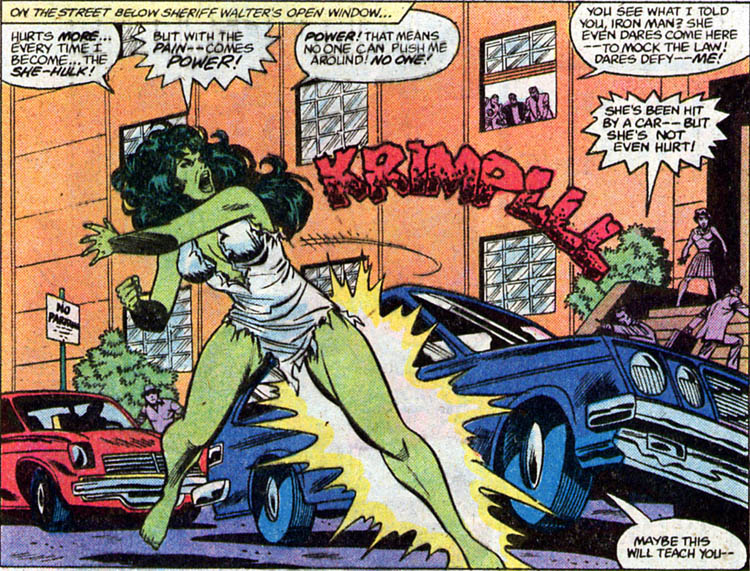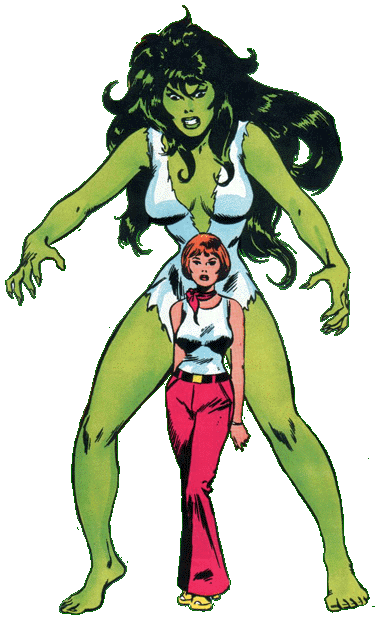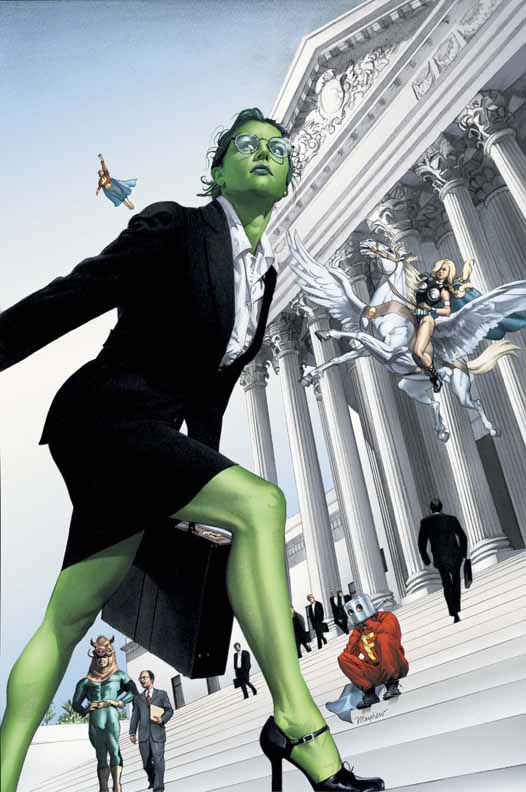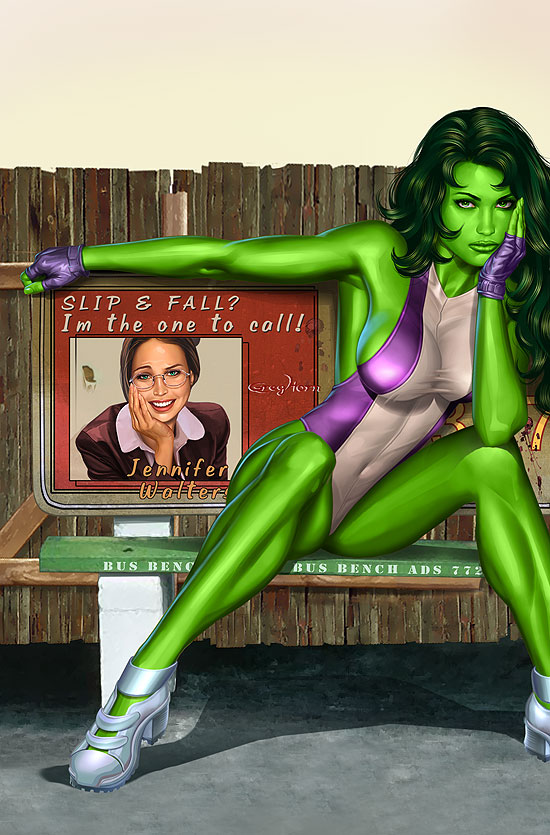|
|
|||||||||||||||||||||||||||||||
|
The Often Misunderstood She-Hulk
By Suzanne MacNevin - November 2007. A friend of mine recently loaned me their copy of THE SAVAGE SHE-HULK Essential by Marvel Comics. It contains the original 25 comics published in 1979 and 1980. And it is surprisingly good. Frankly I was expecting it to be rather horrible, and certainly not intelligent and witty. It is still written for children of course, and it is outdated since it was written in 1979, but that is the brilliance behind it. Writers Stan Lee and David Anthony Kraft make some interesting choices both in the characters and the plots. Let's start with She-Hulk herself, aka Jennifer Walters, is a confident defense lawyer who fights mafia and corruption, and occasionally just plain sexism and bigotry. The sexism is more obvious in her frequent lawyer opponent, the District Attorney Buck Bukowski. He makes varying comments like inferring that Jennifer is too emotional and then flipping around and saying she is cold and heartless. He offers to make Jennifer his legal secretary and is regularly bragging about his latest sports car (She-Hulk has a habit of "accidentally" destroying Buck's cars whenever he gets in her way). Buck's bigotry goes full throttle when faced with the She-Hulk as he is constantly assuming the worst of her, believing that she is responsible for Jennifer Walter's friend Jill's death (She-Hulk was attempting to save her life from the mafia when Buck got in the way and got her friend Jill killed).
She-Hulk is constantly misunderstood throughout the book. People assume she is a villain and dangerous (the latter is sometimes true). In a way she is a metaphor for women and feminism, something men have failed to understand since the beginning of time. Whether it was Stan Lee's intention to create a metaphor for feminism is unknown. For the most part, the jade giantess has joined the ranks of Supergirl, Catwoman, Wonder Woman and Spidergirl, the stereotypical heroines of comic book fiction. Sadly these comic book stars have become fodder for artists who festishize female superheroes. After all they have both beauty, brawn and brains (in no particular order) so its only natural that the readers (a majority of men) have placed these characters both on pedastals as "idealized women", but have also degraded them with scanty dress and sometimes situations that are overtly sexist. Stan Lee purportedly created “Shulkie” to cash in on The Hulk’s raging success in the late ‘70s. Enter Bruce Banner’s cousin, Jennifer Walters. The attractive lawyer was living her regular life until she crossed paths with the mafia. After a mob boss tries to take her out with a hail of bullets her cousin Bruce Banner give her a blood transfusion... and his Hulk superpowers. Thus the She-Hulk was created.
Like her cousin Jennifer tend to react with her primal instincts. She-Hulk would spontaneously take over as her bulging form rips through her business suit. Jennifer eventually gains the ability to control her transformation and gives up lawyering to be a full-time superhero. In the second series (which I have yet to read) Jennifer’s human-to-monster transformation halts permanently, and she wanders the earth as a green-hued strongwoman. She-Hulk fared well in the comic book world. The green giantess had two separate series to her name, The Savage She-Hulk and The Sensational She-Hulk, but mostly lent her hulking image to other comics, most notably as a replacement for The Thing in the Fantastic Four series. She-Hulk never caught on in the mainstream media. She had occasional Hulk comic book appearances and second billing in the Incredible Hulk and She-Hulk cartoon in the 1990s. I could go into more detail with the plots and how She-Hulk deals with situations with both brains and brawn, but that would ruin the plots if you decide to actually read any of the comics. What is far more interesting to me is how women, who are typically viewed as weak (and told they shouldn't be weightlifters, because strong women are considered "unattractive" by some men), have had that role reversed in She-Hulk. She is the stronger one. Even when faced with other villains with super-strength, she is stronger still because her rage can make her even more powerful.
And like the Incredible Hulk, that rage is limitless. What makes her angry however is the bigotry she encounters. Early on in the comics, when she can't yet control her transformation, Buck Bukowski makes some sexist comments that makes her angry. She ends up running from the room so no one can see her transformation. During combat it is often the same deal. She-Hulk's sense of pride and resulting anger is her true power. Having confidence and pride in yourself is nothing to be ashamed of, even though Buck, other goons and even her own father sometimes deride her being too cocky and self-sure. If she were a man her level of confidence wouldn't even be an issue for the other characters, but the writers identified (perhaps unconsciously) that She-Hulk needed her confidence and her pride and this must be an integral part of the plot if they were to make a social statement. After all, what good is a super heroine if she gives up the first time a man says she can't do something?

|
|
||||||||||||||||||||||||||||||
|
Website Design + SEO by designSEO.ca ~ Owned + Edited by Suzanne MacNevin | |||||||||||||||||||||||||||||||



